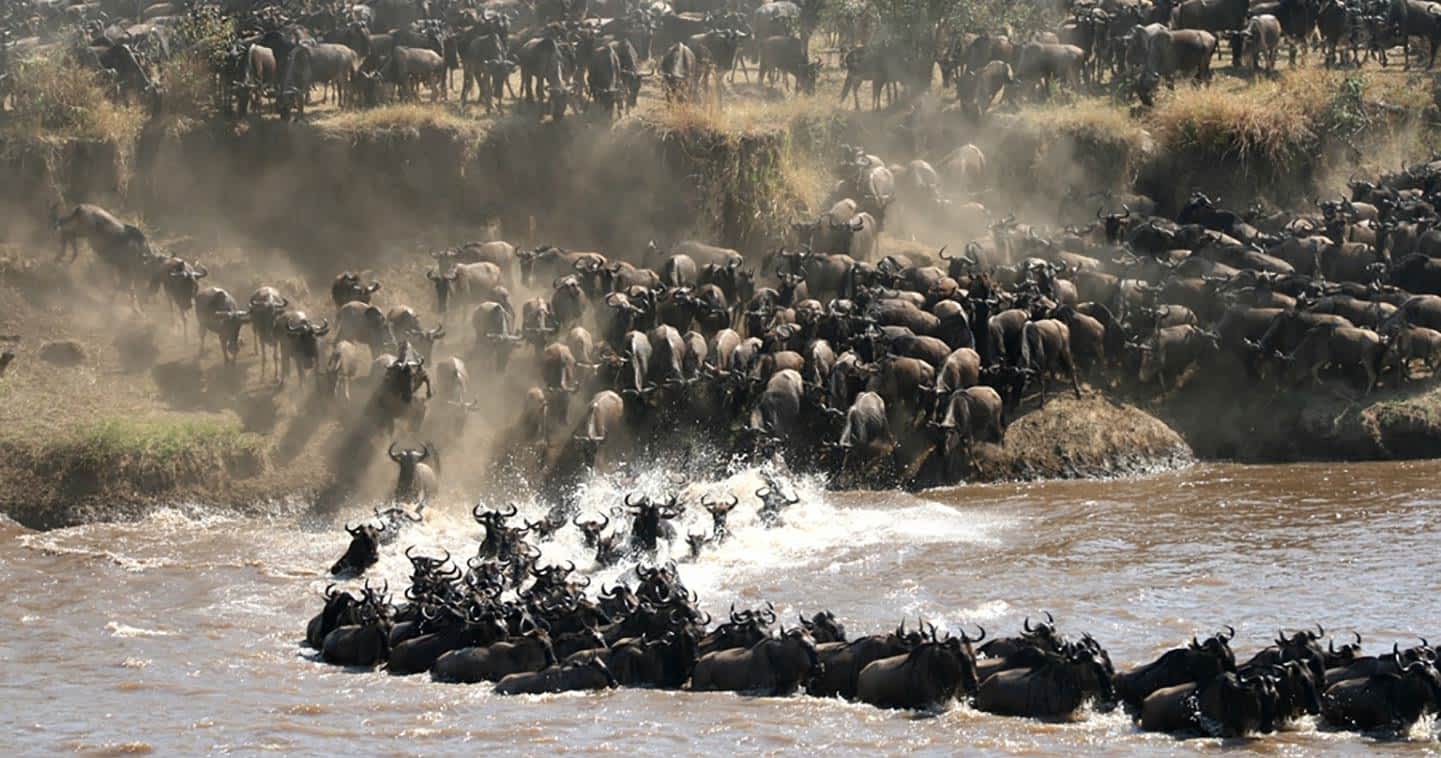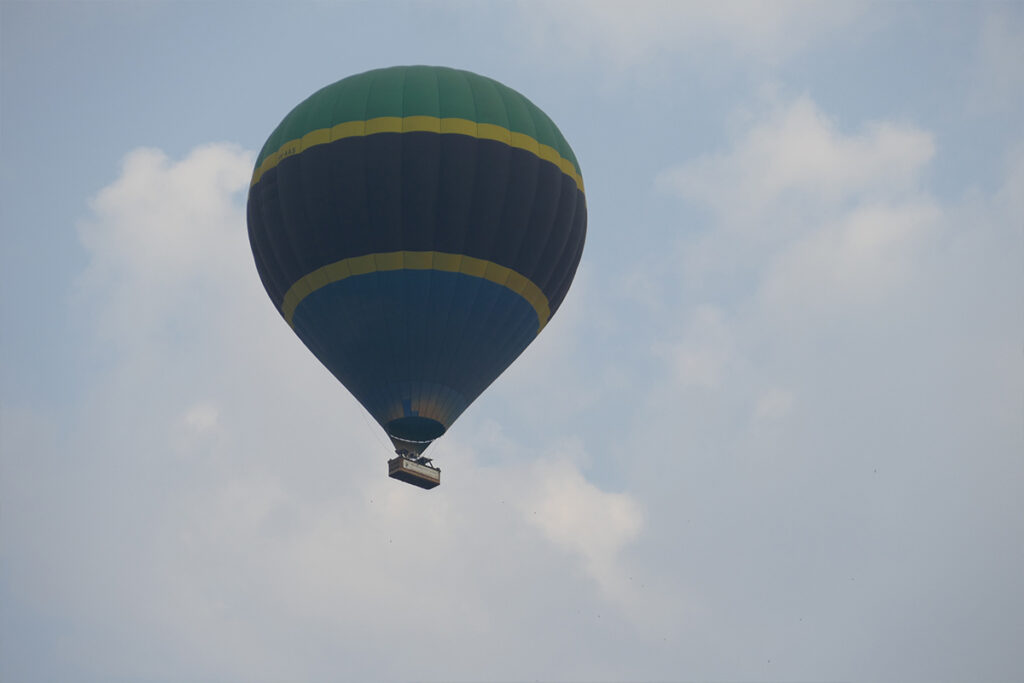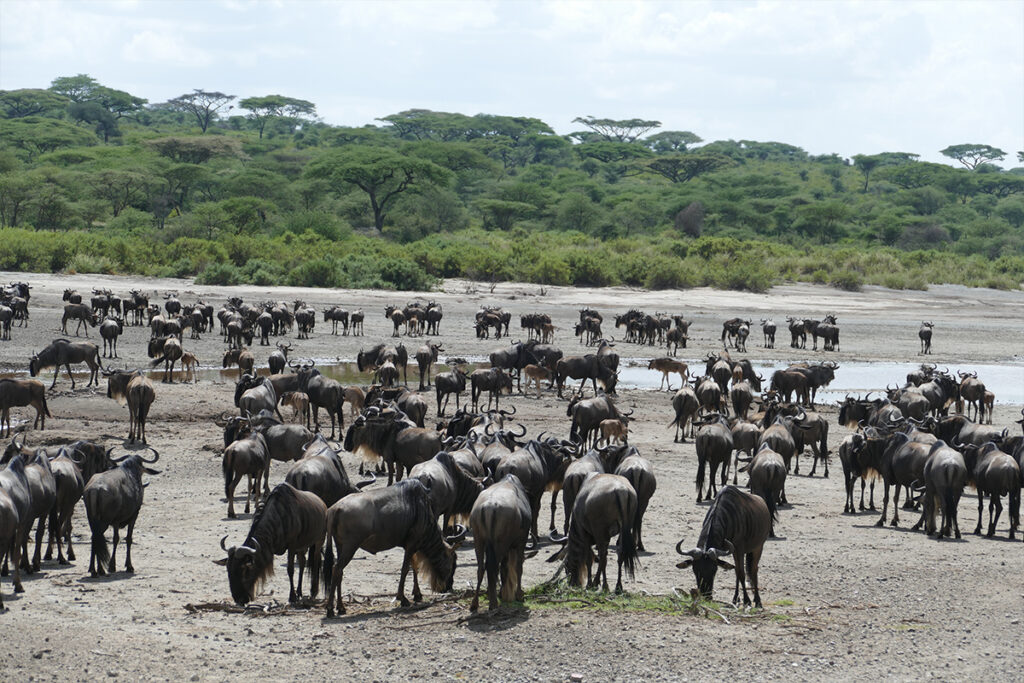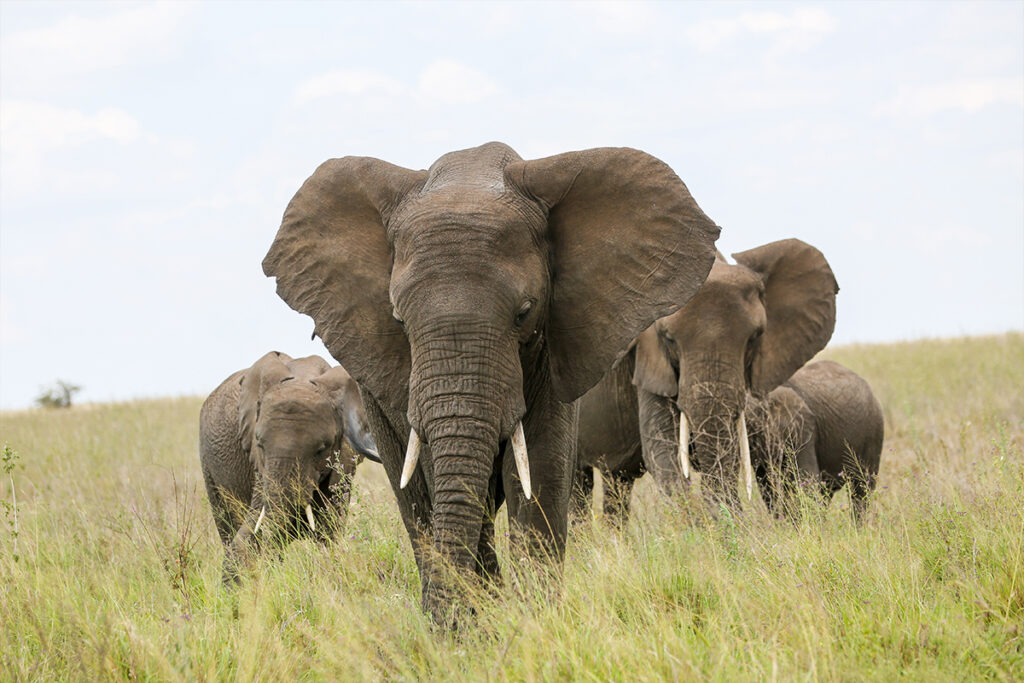Every year, over two million wildebeests, zebras, and gazelles embark on a perilous journey across the plains of Tanzania. This natural spectacle, known as the Great Migration, is one of the most impressive wildlife events on the planet. Witnessing this epic migration firsthand in Tanzania’s Serengeti ecosystem offers insights that transcend mere observation, connecting one deeply to the rhythms of nature.
Tanzania’s Serengeti National Park, established in 1951, is a primary stage for this awe-inspiring event. The park sustains a breathtaking ecosystem that vividly showcases the tireless cycle of life. According to recent studies, over 90% of migration tours in the region successfully allow viewers to engage with this annual odyssey, offering experts a profound understanding of migratory behaviors and environmental influences.

Witnessing the Great Migration in Tanzania
Witnessing the Great Migration in Tanzania is a breathtaking experience. Each year, nearly two million wildebeests join thousands of zebras and gazelles on their long journey. This event showcases the raw beauty of the animal kingdom. The migration is driven by the animals’ need for fresh grazing land and water. It’s a cycle of survival, showcasing nature’s delicate balance.
Seeing the migration in the Serengeti National Park is like stepping into a wildlife documentary. Herds move across the plains, sometimes forming a line that stretches as far as the eye can see. Predators like lions and hyenas follow the herds, looking for the weak and young. This dramatic chase adds to the excitement of the spectacle. It’s a vivid portrayal of the food chain at work.
The most popular times to witness this migration are during the Grumeti River crossings between June and July. Another prime time is from July to September when the herds tackle the Mara River. Guides recommend booking a safari well in advance. Both periods offer stunning views and intense action. To maximize your experience, consider these options:
- Hot air balloon rides for a bird’s-eye view
- Guided jeep tours for closer encounters
- Photographic safaris to capture every moment
The Great Migration also supports the local economy through tourism. Many lodges and campsites are strategically placed to offer prime viewing locations. Tourists not only witness the migration but also support conservation efforts. This helps protect the Serengeti’s ecosystem. Engaging with this event can be both an educational and thrilling adventure.
Best Times to Experience the Migration
Timing your visit to witness the Great Migration is crucial for the best experience. The migration has different stages that span the entire year. One of the best times to visit is between July and August. During this period, the herds cross the Mara River, offering heart-stopping views. You can see animals swimming across while trying to avoid crocodiles.
From December to March, the southern Serengeti becomes a prime spot to witness calving season. Thousands of calves are born, which attracts predators like lions and cheetahs. This is a great time to observe the struggles and joys of new life. The landscape is lush, making the scenes even more beautiful. It’s also less crowded, providing a more intimate experience.
Another excellent time to observe the migration is between May and June. This period marks the start of the dry season in the central Serengeti. During this time, wildebeests and zebras start moving north in search of fresh grass. Witnessing long columns of moving animals across the endless plains is unforgettable. The chilly mornings and vibrant sunsets add layers to the experience.
Planning ahead is essential to secure the best vantage points. Consider staying in mobile camps that follow the migration path. This ensures you’re close to the action at any time. Guides often recommend these camps along with fixed lodges. Here’s a quick list to consider:
- Mobile camps for proximity
- Central Serengeti for conference visits
- Luxury lodges for comfort
The Serengeti Ecosystem and its Role in the Migration
The Serengeti ecosystem plays a crucial role in the Great Migration. It covers about 30,000 square kilometers, offering a diverse habitat for various animals. This vast area includes both grasslands and forests. Its rich soil supports the growth of nutrient-dense grasses, which feed millions of herbivores. As animals move through this region, they spread seeds, contributing to plant growth and diversity.
Rainfall patterns in the Serengeti guide the migration routes. The ecosystem experiences two rainy seasons, impacting where animals find their food. During the dry season, the central plains turn golden and sparse. This pushes herds to northern areas and riverine regions. The cycle of rain and drought creates a natural rhythm for the migration.
Predators in the Serengeti also shape the migration. Lions, hyenas, and crocodiles wait at strategic points like rivers and open plains. This natural dynamic keeps the herds alert and the food chain balanced. The interaction between predators and prey showcases the ecosystem’s complexity. These survival challenges highlight the raw power of nature.
The Serengeti’s unique features sustain this incredible migration. Conservation efforts help maintain its delicate balance. National parks and reserves protect the land from overuse. To explore its wonders, consider these options:
- Visit protected areas for guided tours
- Learn about conservation projects
- Support local eco-friendly initiatives
Planning Your Trip to Align with the Great Migration
To witness the Great Migration in Tanzania, proper planning is essential. First, determine the best time to visit based on the migration pattern. The migration moves in a circular route through the Serengeti. Different times of the year offer various experiences. Booking your trip during the river crossings, for instance, provides intense action scenes.
Choosing the right accommodations also makes a big difference. Opt for mobile camps that move with the herds. This ensures you are always close to the migration action. Luxury lodges offer comfort but may be farther from the routes. Consider your priorities and choose accordingly.
Guided tours can enhance your experience significantly. Expert guides provide insights about animal behavior and the ecosystem. They know the best spots for viewing and can ensure your safety. Many tour operators offer tailored safaris to match your interests. Look for tours that include game drives, walking safaris, and even hot air balloon trips.
Pack wisely for your migration adventure. Bring comfortable clothing suitable for the Serengeti’s varying weather. Don’t forget essentials like sunscreen, insect repellent, and a good pair of binoculars. A camera with a zoom lens will help you capture stunning photos. Here’s a quick checklist:
- Lightweight, breathable clothing
- Sunscreen and hats
- Insect repellent
- Binoculars and camera
Adjusting your expectations can also be crucial. The animals’ movements are natural and unpredictable. Patience is key to making the most of the experience. On some days, you might see huge herds, while on others, wildlife may be sparse. Understanding this adds to the adventure and excitement.
Booking your trip well in advance is highly recommended. Popular times, like the river crossings, get booked quickly. Secure your spot to avoid disappointment. Early booking also allows you to choose the best accommodations and tour operators. Planning ahead truly enhances the magic of witnessing the Great Migration.
Key Takeaways
- Time your visit with the Great Migration’s movements for maximum excitement.
- Mobile camps offer the closest access to the migrating herds.
- Guided tours enrich your experience with expert knowledge and safety assurance.
- Pack smartly with essentials like sunscreen, hats, and binoculars.
- Book early to secure preferred accommodations and tour options.
Conclusion
Experiencing the Great Migration in Tanzania is more than just a visual spectacle; it’s a deep dive into nature’s intricate ballet. The importance of timing, planning, and choosing the right accommodations cannot be overstated. By aligning your visit with the migration’s natural rhythms, you gain insights into the delicate balance of ecosystems.
Experts recognize the Serengeti not only for its beauty but its ecological significance. Conservation efforts here are crucial in maintaining its biodiversity. As you plan your trip, consider how you can support these initiatives, ensuring that future generations also witness this awe-inspiring phenomenon.



